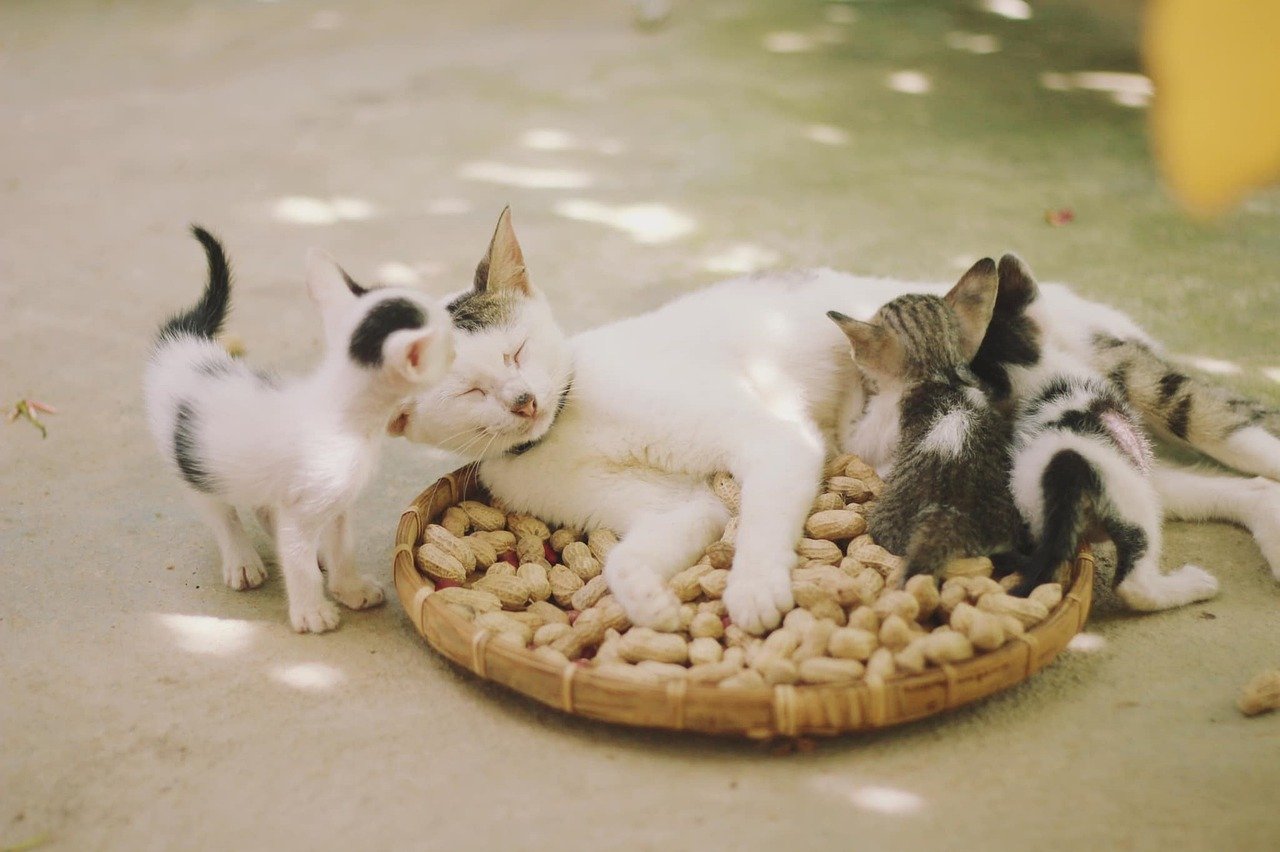Bringing a new cat into your home is an adventure filled with purrs, cuddles, and occasionally, a bit of mischief. One of the first steps in building a strong relationship with your new furry friend is teaching them to recognize their name. Unlike dogs, who often respond eagerly to commands, cats require a more nuanced approach. But worry not—it’s absolutely achievable! Here’s how you can train your cat to respond to their name, ensuring not just a bond but a smoother daily life with your feline friend.
Understanding Your Cat’s Nature
Cats are known for their independent and sometimes aloof nature. Unlike their canine counterparts, they march to the beat of their own drum. This doesn’t mean they can’t learn; it just means they learn differently. Understanding this is crucial. Cats often respond to things that benefit them, like food or affection. By tapping into this natural inclination, you can teach them to recognize and respond to their name. It’s about finding the right motivation that appeals to your particular cat.
Choosing the Right Name

The name you choose for your cat can make a significant difference in how quickly they learn it. Short names, usually one or two syllables, are easier for cats to recognize. Names that end in a vowel tend to be more appealing to their ears. For example, names like “Milo” or “Bella” might grab their attention more than “Christopher.” Simplicity is key—it helps them distinguish their name from the myriad of sounds in their environment.
Creating a Positive Association

Cats are creatures of habit and learn through repetition and positive reinforcement. Every time you call your cat’s name, reward them with something they love. This could be their favorite treat, a gentle pet, or a play session with their favorite toy. The goal is to make their name a signal for something positive. Over time, they will associate their name with good things and become more responsive when they hear it.
Using Treats as a Training Tool
Treats can be a powerful motivator for cats. Start by calling your cat’s name and immediately offering a treat when they acknowledge you. Even if it’s just a flick of the ear or a glance in your direction, reward them. Gradually, they will begin to understand that responding to their name leads to a tasty reward. However, moderation is important—too many treats can lead to health issues, so balance is key.
Pairing Their Name With a Pleasant Tone
The tone of your voice can greatly influence how your cat responds. Cats are sensitive to sound, and a friendly, upbeat tone is more likely to catch their attention. When calling their name, use a voice that conveys warmth and positivity. Avoid using their name in a stern or negative context, as this might make them wary of responding. Think of it as inviting them for a cuddle rather than scolding them for a mistake.
Consistency is Key
Consistency is crucial when training any animal, and cats are no different. Regular practice helps reinforce the behavior you want. Make it a habit to call your cat’s name several times a day, even when you’re not actively training. This repetition helps cement the association in their mind. Remember, patience is part of the process. Some cats may take longer to respond, but with time and consistency, they’ll get there.
Incorporating Play Into Training
Cats love to play, and incorporating playtime into training can be very effective. Call their name during a play session and reward them when they respond. This not only reinforces the name recognition but also strengthens your bond. Play is a natural behavior for cats, and using it as a training tool makes learning feel like a game rather than a chore.
Observing Your Cat’s Reactions

Pay attention to how your cat reacts when you call their name. Do they twitch their ears, look up, or come running? These are all positive signs. If your cat doesn’t respond, it might be because they’re not interested at the moment, or they might not have made the connection yet. Observing their reactions can help you adjust your training approach to better suit their personality and preferences.
Creating a Distraction-Free Environment

Training sessions should be conducted in a quiet, distraction-free environment. Cats are easily distracted by noises, movements, or other animals. By eliminating these distractions, you give them a better chance to focus on the training. Choose a quiet room where you can have their undivided attention, making it easier for them to learn and respond.
Building Trust and Respect

Training your cat to respond to their name isn’t just about teaching a trick—it’s about building trust and respect. By engaging in positive reinforcement and spending quality time with them, you’re strengthening your relationship. This trust makes them more likely to respond to you, not just when you call their name, but in other aspects of your shared life.
Understanding Your Cat’s Unique Personality

Every cat is unique, with its own personality and quirks. Some cats are naturally more responsive, while others might be more reserved. Understanding your cat’s personality can help tailor your training approach. If your cat is shy, they might need more encouragement and patience. For more outgoing cats, a playful approach might be more effective.
Using Hand Signals

In addition to verbal cues, consider using hand signals when calling your cat. Cats are visual creatures and can learn to associate certain gestures with their name. For instance, you might raise your hand or tap a specific spot when calling them. This dual approach can be especially helpful if your cat has difficulty hearing or is in a noisy environment.
Setting Realistic Expectations
While many cats can learn to respond to their name, it’s important to set realistic expectations. Not every cat will come running every time you call. Some might acknowledge you with a glance or a meow, and that’s perfectly okay. Celebrate these small victories and understand that training is an ongoing process. Patience and persistence will yield the best results.
Involving the Whole Family

If you live with family or roommates, it’s beneficial to involve them in the training process. Consistency across all interactions is important for reinforcing the behavior. Encourage everyone to use the cat’s name in the same positive way and reward them for responding. This unified approach helps your cat understand that their name holds the same meaning regardless of who is calling them.
Recognizing When to Stop

Cats, like people, can become fatigued or frustrated if training sessions go on for too long. It’s important to recognize the signs that your cat has had enough. If they start losing interest or seem stressed, it’s time to stop. Short, frequent sessions are more effective than long, drawn-out ones. Keep sessions positive and end on a good note with a reward.
Using Technology to Aid Training

In today’s digital age, technology can be a helpful tool in training your cat. There are apps and devices designed to assist with training, offering reminders, and tracking progress. Some devices even allow you to call your cat and dispense treats remotely, which can be a fun way to reinforce their name recognition when you’re not at home.
Addressing Common Challenges

Training a cat to respond to their name can come with challenges. Some cats may be more stubborn than others, or external factors like stress or health issues might affect their response. Address these challenges by being patient and adaptable. If one method doesn’t work, try another. Remember, each cat is different, and what works for one might not work for another.
Celebrating Successes
Every small step forward is a success worth celebrating. Whether your cat responds consistently or just gives you a glance when you call, it’s progress. Reward these successes with treats, affection, or playtime. Celebrating these moments not only reinforces the behavior but also makes the training process enjoyable for both you and your cat.
Nurturing a Lifelong Bond

Training your cat to respond to their name is just the beginning of a lifelong bond. This process is an opportunity to connect with your feline friend, understand their behavior, and communicate more effectively. The skills and trust developed during training will benefit you both in the long run, enhancing the companionship and joy that comes from sharing your life with a cat.
In conclusion, training a cat to respond to their name is a rewarding journey filled with small victories and moments of connection. By understanding their nature, using positive reinforcement, and being patient and consistent, you can teach your cat to recognize their name. This not only improves communication but also strengthens the bond between you and your feline friend, making for a harmonious and enjoyable relationship.
Hi, I’m Bola, a passionate writer and creative strategist with a knack for crafting compelling content that educates, inspires, and connects. Over the years, I’ve honed my skills across various writing fields, including content creation, copywriting, online course development, and video scriptwriting.
When I’m not at my desk, you’ll find me exploring new ideas, reading books, or brainstorming creative ways to solve challenges. I believe that words have the power to transform, and I’m here to help you leverage that power for success.
Thanks for stopping by, Keep coming to this website to checkout new articles form me. You’d always love it!






